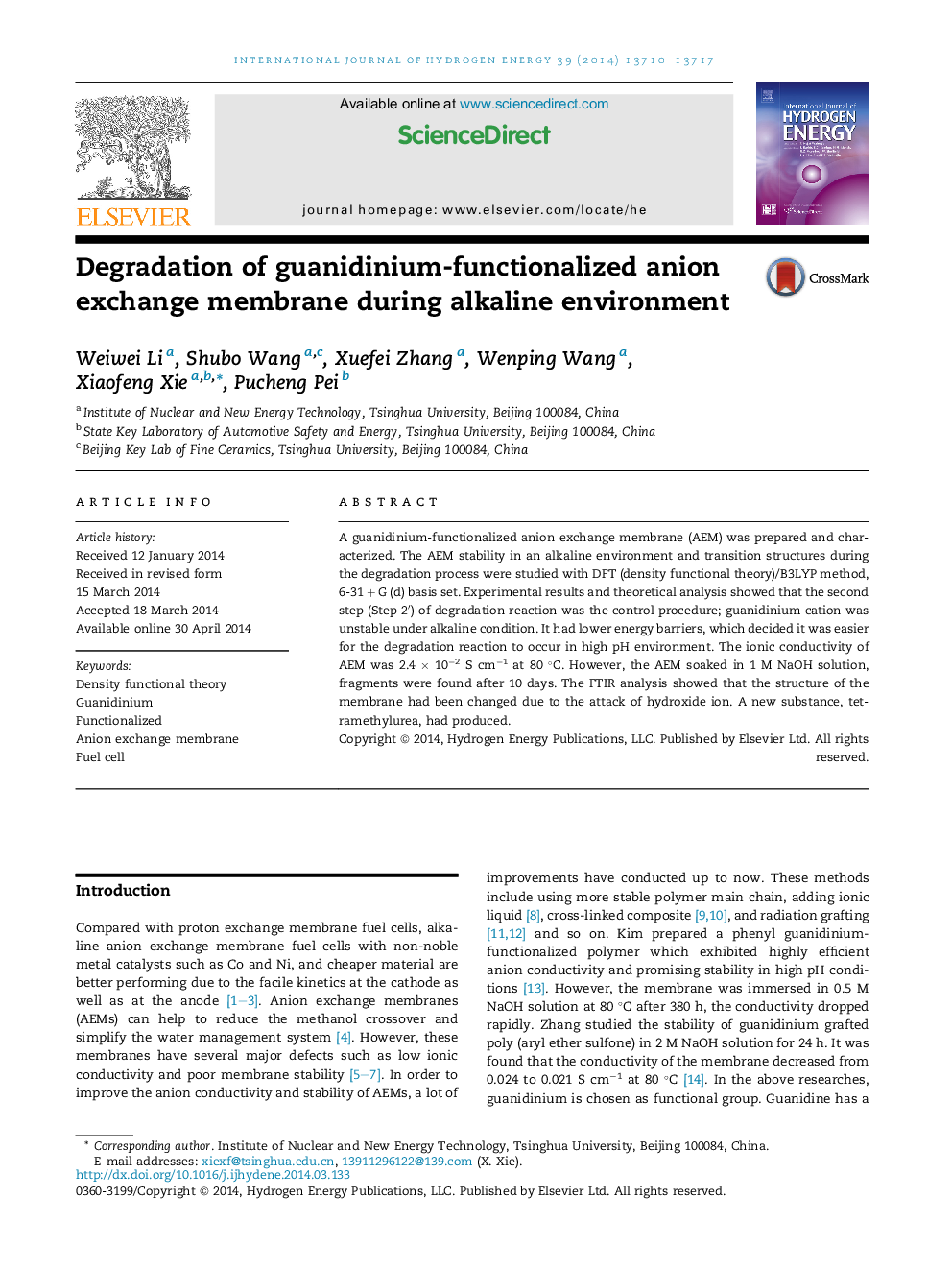| Article ID | Journal | Published Year | Pages | File Type |
|---|---|---|---|---|
| 1272675 | International Journal of Hydrogen Energy | 2014 | 8 Pages |
•Guanidinium-based alkaline anion exchange membrane was prepared and characterized.•The degradation mechanism of guanidinium cation in alkaline solution was studied.•The energy changes during the whole degradation reaction were analyzed.•Effects of OH− concentration and substituents on energy barriers were discussed.
A guanidinium-functionalized anion exchange membrane (AEM) was prepared and characterized. The AEM stability in an alkaline environment and transition structures during the degradation process were studied with DFT (density functional theory)/B3LYP method, 6-31 + G (d) basis set. Experimental results and theoretical analysis showed that the second step (Step 2′) of degradation reaction was the control procedure; guanidinium cation was unstable under alkaline condition. It had lower energy barriers, which decided it was easier for the degradation reaction to occur in high pH environment. The ionic conductivity of AEM was 2.4 × 10−2 S cm−1 at 80 °C. However, the AEM soaked in 1 M NaOH solution, fragments were found after 10 days. The FTIR analysis showed that the structure of the membrane had been changed due to the attack of hydroxide ion. A new substance, tetramethylurea, had produced.
